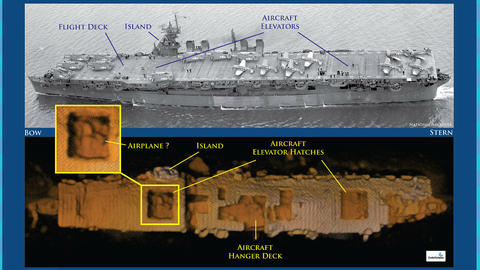The USS Independence CVL-22

The World War Two era USS Independence (CVL-22) was one of many US Navy ships to carry the name independence (leading up to today's Littoral Combat Ship: LCS-2). What made this Independence unique was that it was the lead ship in a class of light aircraft carriers produced from converted cruisers.
What many forget today is that in 1941 the US Navy was desperate to find additional decks to support its existing carrier fleet, which throughout the first years of the Second World War was outnumbered by the Imperial Japanese Navy's carriers. To that end, late in 1941 the US Navy moved to convert several Cleveland class light cruisers into light carriers (while at the same time accelerating development of the new Essex Class Fleet Carriers that would eventually play the key role in sweeping the Japanese Navy from the Pacific).
USS Independence (CV-22) was laid down as the Cleveland-class light cruiser USS Amsterdam (CL-59) on May 1, 1941. Selected for conversion to an aircraft carrier and renamed Independence, she was commissioned on January 14, 1943. The Independence turned out to be a powerful combat vessel. Though possessing narrow and short flight and hangar decks ishe was a fast ship capable of pacing the larger Essex class carriers. And though her air wing, at around 30 aircraft, was significantly smaller than that of the fleet carriers it retained more than enough firepower to offer potent strike capabilties.
In addition she proved incredibly durable - surviving a torpedo strike delivered by Japanese aircraft in November of 1943 while operating in the Gilbert Islands. This durability is evident in the remarkable picture accompanying this post of the ship at sea during the War and then after scuttling in 1951 and taken by a NOAA underwater drone earlier this year. Following the Second World War the Independence was one of more than 90 vessels assembled as a target fleet for the Bikini Atoll atomic bomb tests in 1946. Damaged by shock waves, heat and radiation, she nevertheless survived and returned to the United States. After undergoing additional testing regarding radiation and other such impacts from the blasts she was scuttled in January of 1951 off the Farallon Islands (most famous for being the site of a large population of Great White Sharks). There she still resides in 2,600 feet of water.



Post new comment